Midwestern Revival Tour: Marshall
In such a bizarre season, it’s only fitting that the center of college football in 2020 is found in America’s heartland. And so Sports Illustrated’s two college football writers set out on a (masked and socially distanced) journey to the six campuses in this Midwestern footprint. Ross Dellenger has the northern tier, trekking West to East from Evanston to South Bend to Columbus. Pat Forde is taking the southern route and going East to West, from Huntington to Cincinnati to Bloomington.
We’re rolling out two stories a day, starting Wednesday and running through Friday, as well as updates on our social media platforms, using the hashtag #MidwesternRevivalTour. Keep up to date with the entire series here.
MORE: NORTHWESTERN | NOTRE DAME | CINCINNATI | INDIANA | OHIO STATE
***
Marshall
WHY WE'RE HERE: Marshall is 7–0 and ranked No. 15 in both polls, its highest ranking since 1999.
SEASON HIGH POINT: Beating Appalachian State 17–7 on Sept. 19, which showcased an elite defense and elevated expectations.
PROGRAM ARC: After the tragedy of 1970, a long rebuild yielded undefeated seasons in the late 1990s with the likes of Randy Moss and Chad Pennington. Today the Thundering Herd is close to being on par with those great teams.
PROGRAM EDGE: Recruiting pipelines to the South under coach Doc Holliday, particularly Florida and Georgia. Marshall entered the 2020 season with 36 players on the roster from those two states.
ACADEMIC BRAGGING POINT: College of Engineering.
CAMPUS ICONOGRAPHY: Memorial Fountain, constructed near the center of campus to honor the 75 killed in the plane crash.
PLACE YOU MUST VISIT: The Union Pub & Grill, home of the "Southern Belle," a cocktail composed of Canadian Club, Peach Schnapps and Red Bull. (Lord help us all.)
***
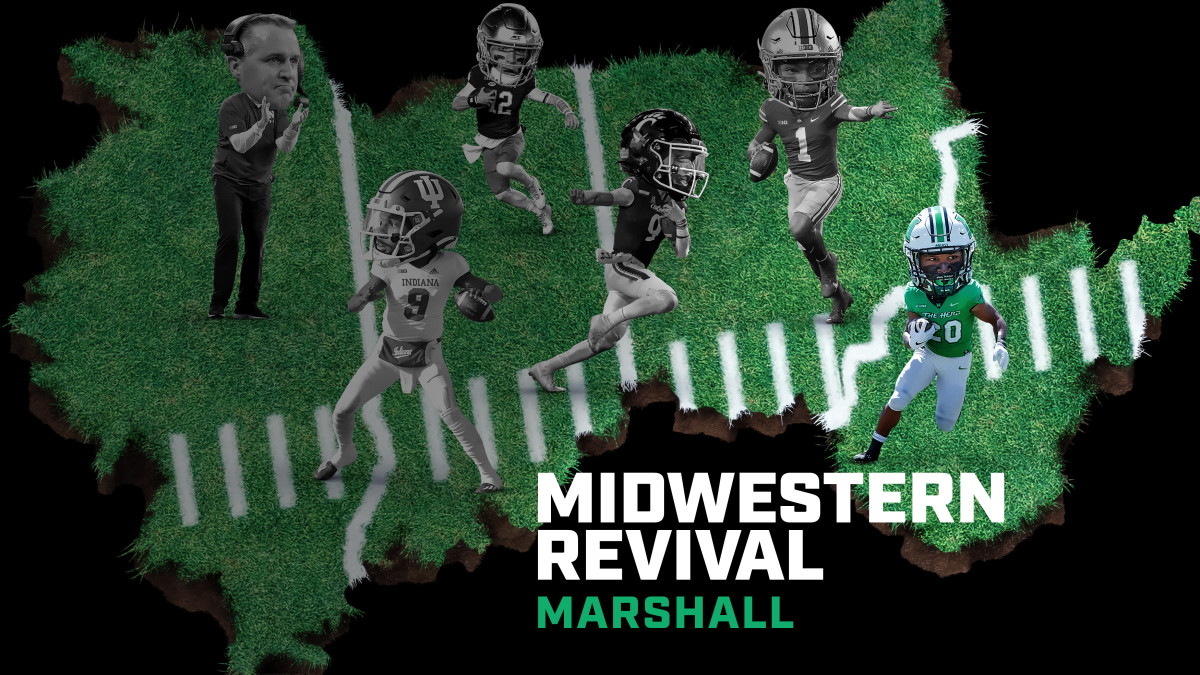
HUNTINGTON, W.Va. — A blustery wind is pushing intermittent clouds briskly across the sky, the sun playing hide-and-seek behind them, winter closing in. On the hilltop, the last autumn color is fading from the trees. But the lost leaves actually present a gift of sight and perspective.
Through bare branches, Marshall University is visible below.
Up here, at Spring Hill Cemetery, it’s just a few yards from the simple monument memorializing the worst sports tragedy in U.S. history to a view of the college that was so profoundly affected by it. Fifty years ago last Saturday, a plane crash killed 75 people associated with the Marshall football team—wiping out the program for a brief and terrible moment, but not long. The Thundering Herd rebuilt, fielding a team again in 1971, as the movie We Are Marshall famously chronicles.
Today Marshall is one of the great success stories of 2020, owning a 7–0 record and a No. 15 national ranking, with a remaining schedule that makes an undefeated season quite realistic. From tragedy long ago, Marshall endured and actually grew as both a university and a football program. Amid tragedy today, with the deadly COVID-19 pandemic raging, Marshall again thrives. The theme repeats and reverberates.
The half-century-old connective thread between dark times then and dark times now remains remarkably strong. That’s because the men in charge of football here refuse to let it break or fray. Athletic director Mike Hamrick and football coach John Otis (Doc) Holliday are from this place—sons of the West Virginia hills, called back home from points elsewhere, happy to stay and determined to remember.
“You hate to say this,” says Hamrick, pulling his SUV back onto campus after a visit to the cemetery, “but that plane crash is what this university is all about. Our response to it made this university better, and football made this university better. I couldn’t imagine this place without football.”
Marshall football, in turn, couldn’t imagine this place without honoring the 1970 team.
Every year, Holliday has his entire squad run a mile uphill from Joan C. Edwards Stadium to Spring Hill. He then arrays the players around the monument and has them listen to the stories—of tragedy, and of rebirth. They listen to Keith Morehouse, whose dad, Gene, was the radio voice of the Thundering Herd and who perished in the crash.
The history is handed down. The dead are never forgotten. For as long as Hamrick and Holliday are there, Marshall will always know what happened on Nov. 14, 1970, when a Southern Airways plane returning from a game at East Carolina smashed into a West Virginia hillside on a foggy, rainy night. And they will know what the school did afterward to recover.
“When the kids get here, it’s just a movie to them,” Holliday says. “At the end of the day at the cemetery, our players know what they’re playing for.”
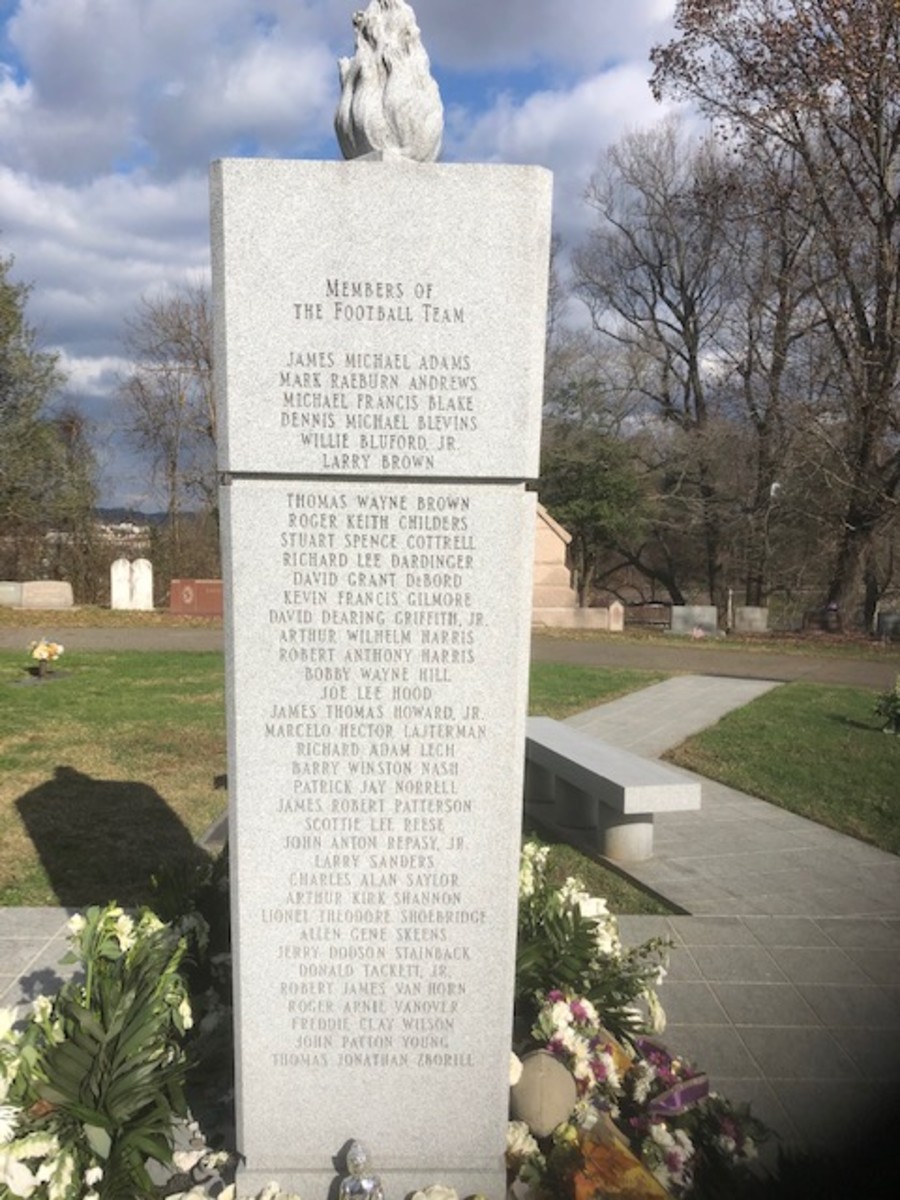
Holliday says this while sitting at the far end of a table in a meeting room at the Marshall athletic offices. The unvarnished 63-year-old is wearing two masks, shorts, a black hoodie and some scuffed sneakers. Atop his head is a white hat with a green “M,” a replica of the hat Jack Lengyel wore when he coached the Thundering Herd’s rebuilt team in 1971 (and Matthew McConaughey wore in the movie, playing the part of Lengyel).
Both Hamrick and Holliday were 13 years old when the plane crashed. Hamrick was a football and basketball player growing up in Clendenin, W.Va., not far from the state capital of Charleston. Holliday was a football player and wrestler growing up in Hurricane, (pronounced “Hurrikinn” by the locals), just 20 minutes away from Huntington. For them, the crash wasn’t something they learned about later—it was something they lived through.
“I watched how hard it was for this place to fight and fight and fight,” Holliday says. “There’s not a football team in the country that means more to the fan base and community than this one, because of what we’ve been through.”
Holliday and Hamrick would go on to play against each other in high school. Both were standout football players, good enough to be recruited to play in college. On the day their teams were playing in a highly anticipated game, West Virginia sent coaches to watch both Holliday (a touted linebacker) and one of Hamrick’s teammates.
Then Holliday was knocked unconscious covering the opening kickoff and missed the rest of the game. At least that’s how Hamrick, also a linebacker, tells the story. There are a lot of jibes exchanged between the two men about their high school playing days—sparring sessions that reveal the depth of their relationship.
They are a classic yin-and-yang pair: Holliday the taciturn ball coach who avoids outside distractions; Hamrick the gregarious people person who excels at making connections (and raising money). They were peers growing up in a remote state, went out to see the world, then came home more or less together.
Holliday was a star high school wrestler who had an undefeated senior season, winning the West Virginia 167-pound weight class with a pin just 30 seconds into the championship match. He went on to play linebacker at West Virginia, earning three varsity letters primarily on sheer effort and toughness. “The hardest of hard asses,” Hamrick said.
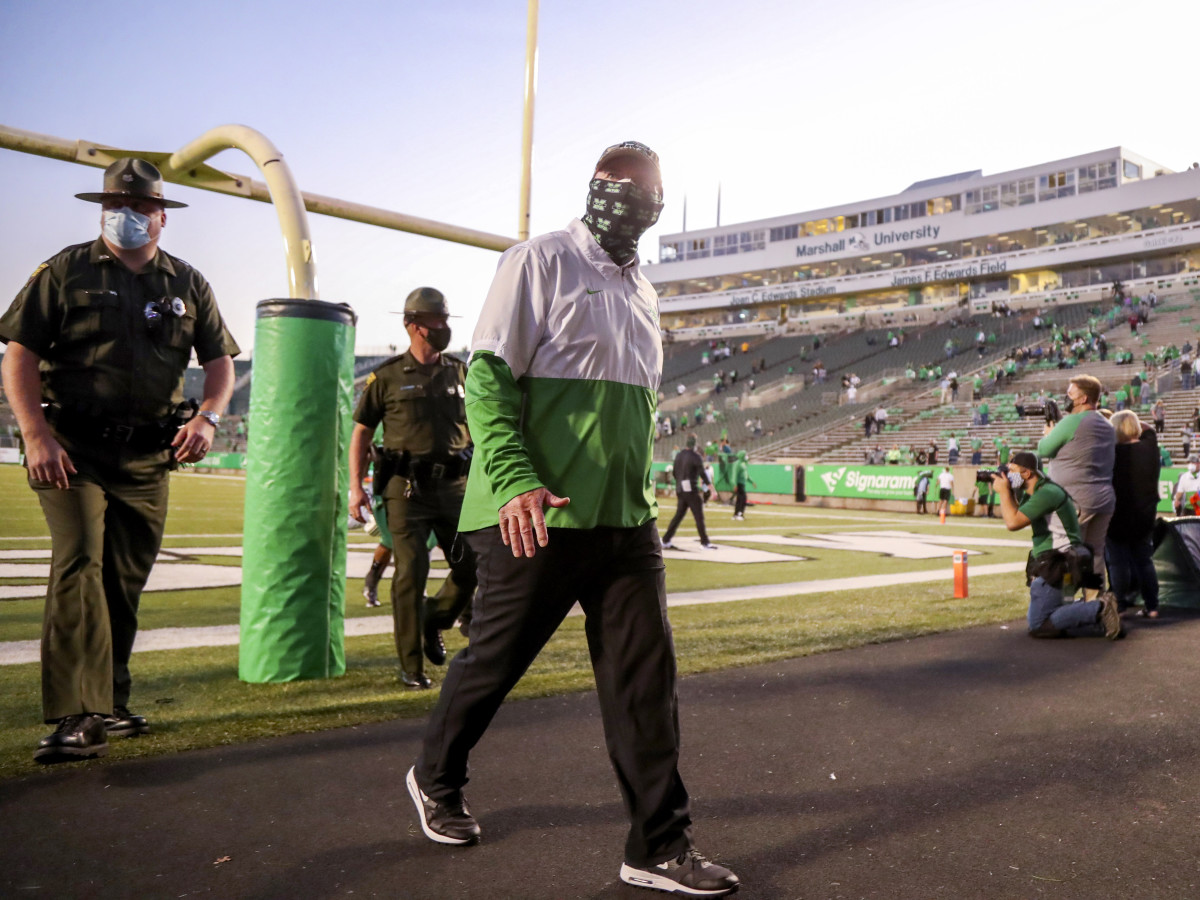
Hamrick went on to play at Marshall from 1976–79, recruited there by Lengyel himself. The program was still working through a decade-plus rebuild after the tragedy, and the Thundering Herd weren’t very good during his time. ("No one talked about the crash," Hamrick said. "It was still too painful.") There are memories of feeding squirrels through open windows in his economics class, and meeting and courting a girl from the Tri-Sigma sorority named Soletta, who today is his wife of 39 years.
Hamrick does vividly remember the last game of his junior year, not so much for what happened during it as what came after. Marshall was again playing a mid-November game at East Carolina. The Herd were smashed, 45–0, ending a 1–10 season. The flight home that night bumped through bad weather.
“We were scared to death,” Hamrick said. “Absolutely terrified. You could hear a pin drop on that plane. We lost pretty good, but when we landed there was a sigh of relief.”
While Hamrick transitioned after college into sports administration, Holliday dove into coaching at his alma mater. Working for legendary Mountaineers coach Don Nehlen, Holliday was dispatched to recruit South Florida. Somehow, the white son of a judge from Hurricane, W.Va., could relate remarkably well to Black kids from greater Miami.
Holliday led West Virginia’s Sunshine State recruiting invasion, which in turn helped lead the Mountaineers to national prominence in the 1980s and ‘90s. That continued to be Holliday’s recruiting niche in the early 2000s, when he went to North Carolina State to work with Chuck Amato.
After the 2004 season, Holliday was working the South Florida beat when Hamrick—then the AD at UNLV—got a call from Florida coach Urban Meyer. The two knew each other from younger days at Illinois State, when both were just starting in the college sports business. Meyer was a year into the Florida gig, and he needed recruiting help; did Hamrick have a number for Doc Holliday?
Hamrick connected the two men, and it was a whirlwind marriage. Holliday was visiting a prospect in Carroll City and Meyer asked him to meet at a private airport in Opa Locka. After one conversation, the deal was done, and Holliday immediately started recruiting the same turf for the Gators.
“I had recruited there my whole life,” Holliday says. “I thought wearing that Gator on your chest was the best job in college football because of all the players you could get.”
When Rich Rodriguez left West Virginia in 2007 for Michigan, Holliday was considered a front-runner to replace him at his alma mater. But the Mountaineers surprisingly won the Fiesta Bowl, and the school administration capped a late-night celebration of that victory with an impulse buy—they named interim Bill Stewart the full-time head coach. Stewart brought Holliday home as his associate head coach.
Two years later, his old friend Hamrick also came home—to Marshall. He was hired away from East Carolina to be the AD at his alma mater, and the first order of business was firing Mark Snyder after five subpar seasons at a program that had become a consistent winner from the late 1980s to the early 2000s.
The second order of business was hiring Doc Holliday.
Going after a West Virginia graduate and assistant was politically dicey at Marshall, where they have a healthy dislike of the big brother program that won’t regularly schedule them. But Hamrick was sure Holliday was his guy, so he arranged a classically West Virginia clandestine interview roughly halfway between Huntington and Morgantown: Meet me at the Days Inn in Flatwoods.
Hoping to keep a low profile, Hamrick told Holliday to meet him at his room and gave him the number. Walking to the room, Holliday says he encountered a maintenance man who recognized him immediately. (Hamrick said it happened at the front desk. Versions of events vary, but the larger truth remains the same.)
Holliday got the job and put his Florida recruiting pipeline to work at a place with easier academic restrictions than some of its peers. Working the junior-college ranks as well, Marshall went a combined 33–8 from 2013–15, with two Conference USA titles. A 3–9 blip in 2016 led to reports that the governor of the state wanted both Holliday and Hamrick ousted, but they outlived that political pressure and have gone 32–14 since.
That includes the 7–0 start this season. Marshall is in the mix for the New Year's Six bowl bid that goes to the highest-ranked member of the Group of Five conferences, but likely will need Cincinnati and BYU to stumble somewhere down the stretch.
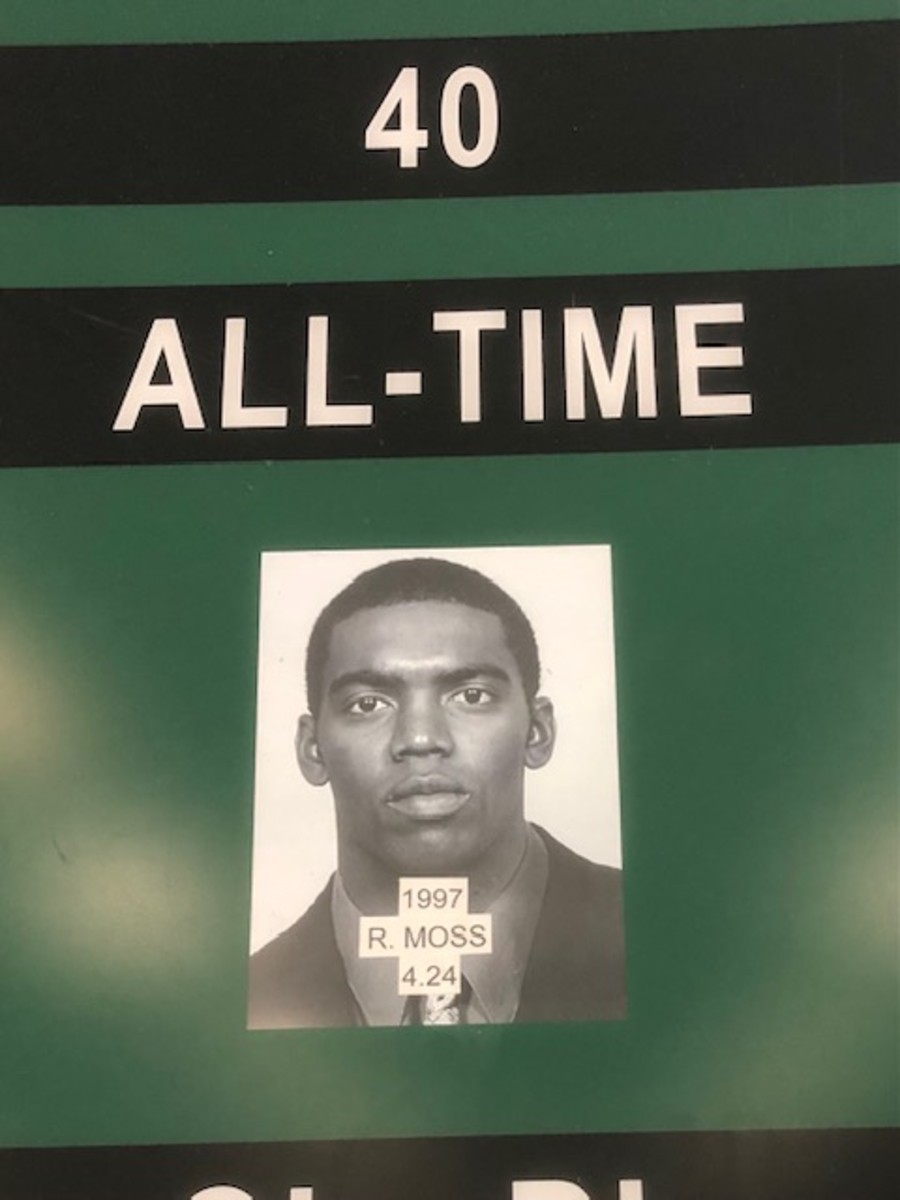
Still, this has been a throwback-to-glory season for a program that went undefeated twice in the 1990s with the likes of Randy Moss and Chad Pennington on the roster. Every seat Marshall is allowed to sell is taken. The fiercely loyal fan base is enraptured by an elite defensive team that has won every game this season by double-digits, and will be heavily favored in all its remaining games.
“I think we have the pieces in place to play with any team on any given Saturday,” Holliday says. “But we can only control what we can control.”
Holliday’s record at the school is strong enough to earn him some offers from Power 5 programs, Pittsburgh, most notably, made a run at him in 2014, according to Hamrick, when Paul Chryst departed after just one year on the job. But Holliday never looked at Marshall as a stepping-stone job. He knows where he fits and why, so he accepted an enhanced six-year deal to stay put.
Just let Doc coach football and, in the offseason, escape to his 200 acres upstate in West Virginia to fish for trout. Let his buddy Hamrick handle the boosters and the media. Don’t mess with happy.
How long will the two 63-year-olds keep going in tandem? They don’t know, or at least won’t say. But one of the things that keeps their fires burning bright is honoring the memory of that 1970 team, and those who came after to rebuild.
The centerpiece of the Marshall campus is a fountain erected to commemorate the 75 lives lost in that plane crash. This past weekend, they hung banners from the light posts around it with black-and-white photos of those who died: Black players from Alabama, who couldn’t get scholarships to play in the Southeastern Conference; several kids from the Catholic power Moeller High School in Cincinnati; fans and staff from right there in Huntington.
Every year, they honor the 1970 team, and every year people return to the ceremony by the fountain. Hamrick knows so many of the names and so many of the stories of the deceased by heart.
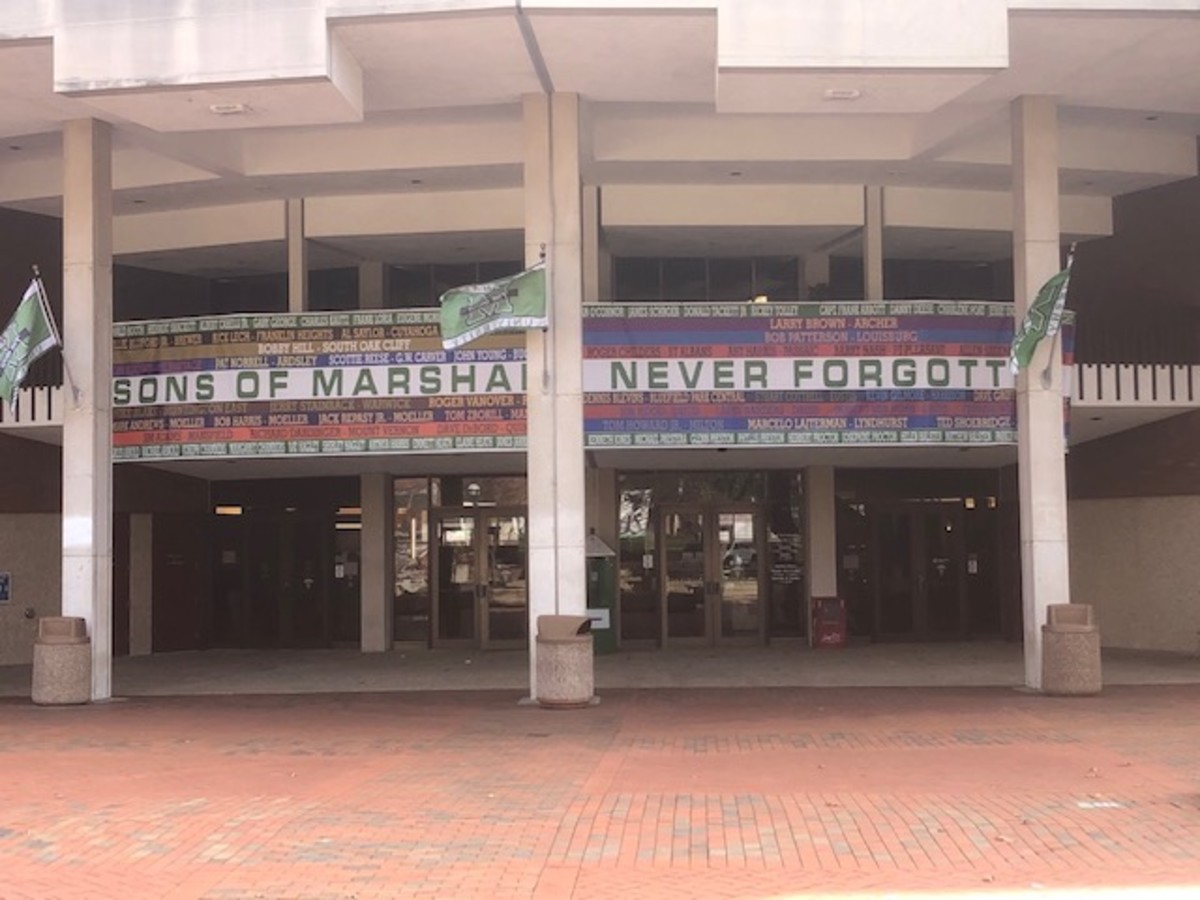
Right next to the fountain is the Memorial Student Center. Inside it, “We Are Marshall” plays on a continuous loop on a TV screen. Hamrick lays his eyes on the movie he has seen hundreds of times and is immediately transfixed, calling out play-by-play of the climactic game and repeating dialogue.
“Yep, 213 bootleg screen,” he says, citing the play for the winning touchdown against Xavier in 1971, which serves as the final scene of the movie.
A student Hamrick knows sidles up and watches a few minutes of the movie next to him. This is the Marshall Mike Hamrick and Doc Holliday love and cherish, tragic past connected to triumphant present, the horrors of a plane crash and a pandemic somewhat lessened by the enduring diversion of football.
“You want the students to come here and see this,” Hamrick says, gesturing at the screen. “So it lives on forever and ever.”
MORE: NORTHWESTERN | NOTRE DAME | CINCINNATI | INDIANA | OHIO STATE
